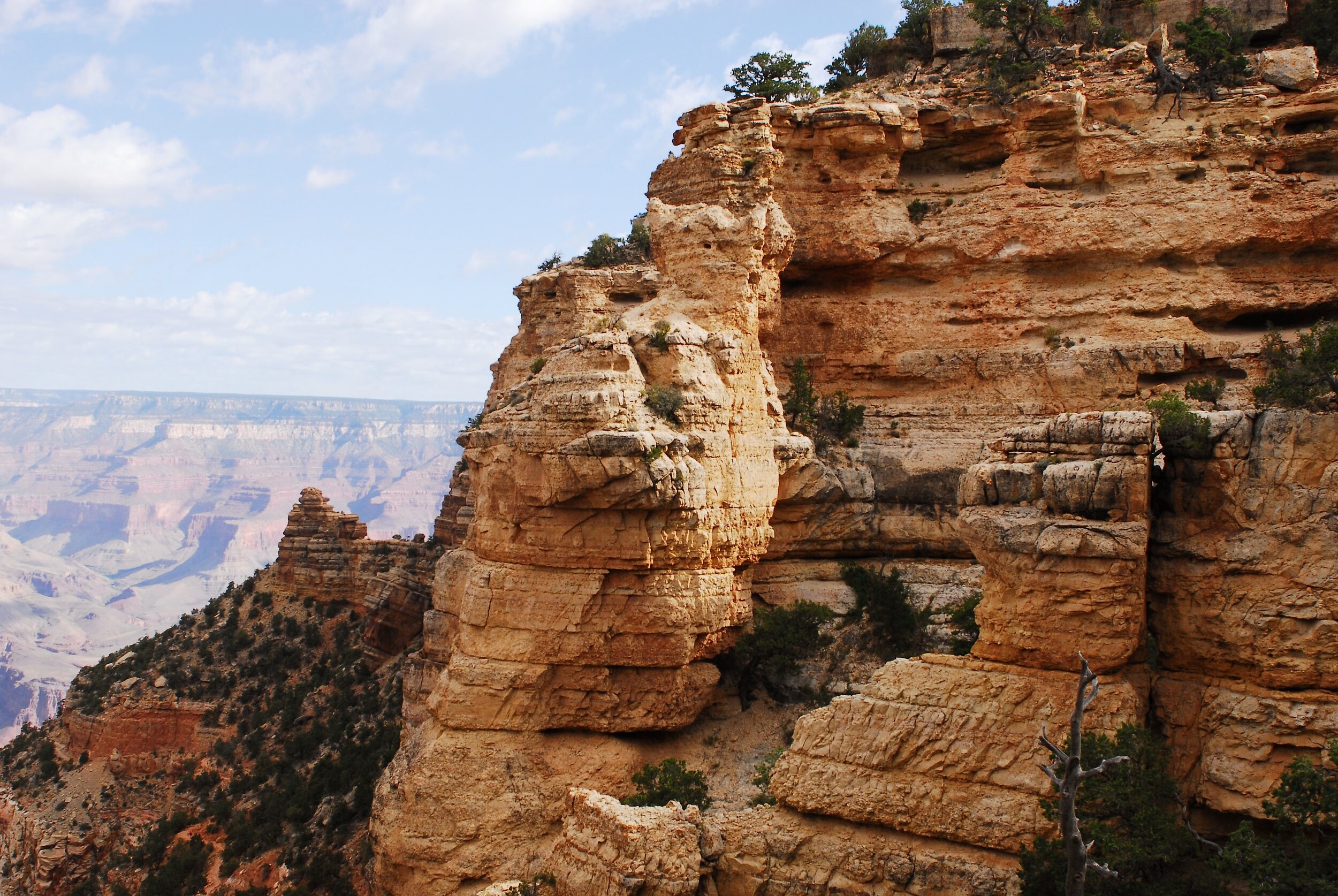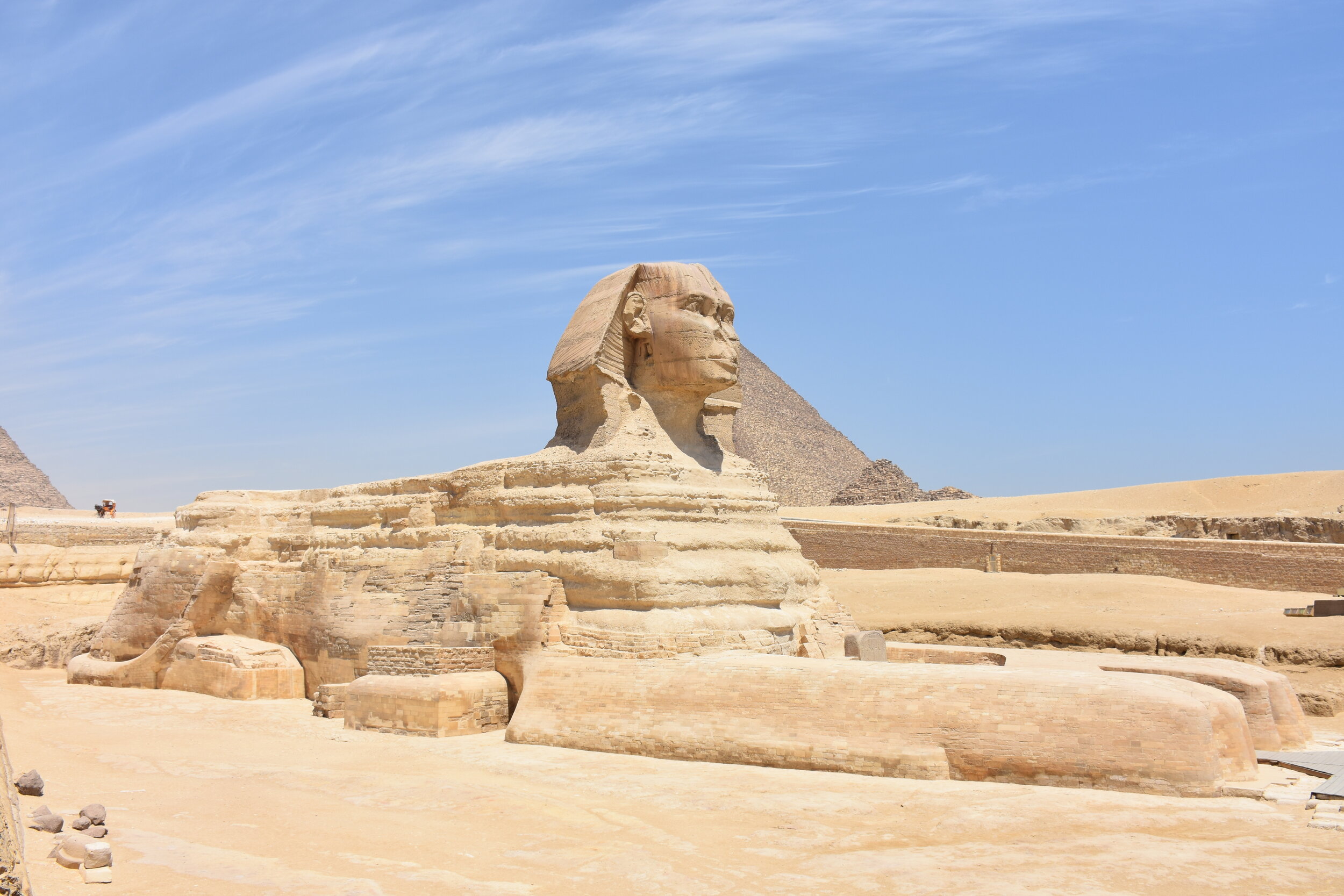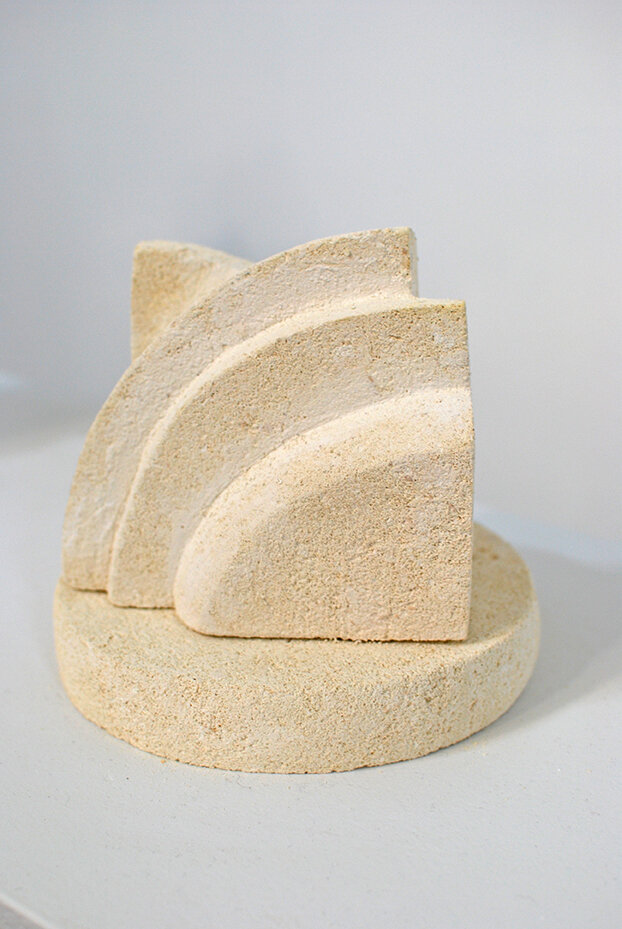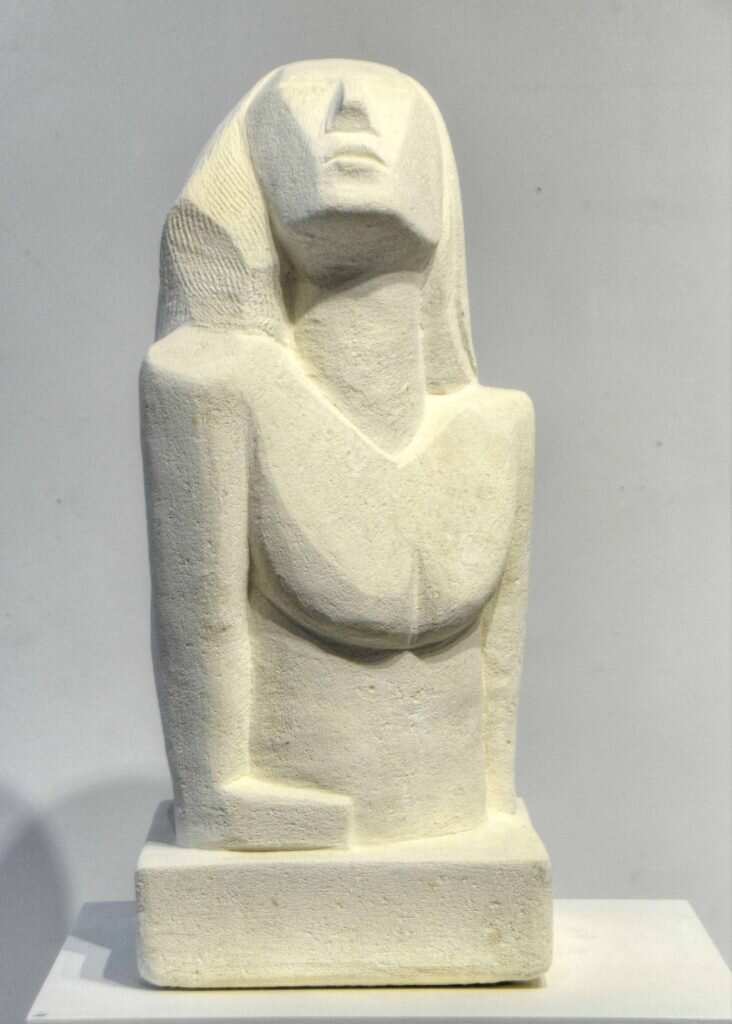Be Inspired: Materials Under the Microscope – Limestone
Figure 1
Following on from our discussion of soapstone (the softest of the carving stones), this week we move up a grade of hardness and focus on limestone, another of the stones regularly used in sculpture. Limestone is a fascinating material with many uses in the world of the arts as well as in lots of industrial, agricultural and construction areas.
Limestone ranges between 2 – 3 on the Moh scale (depending on the type). Once again, we take a look at its geological and chemical composition, and explain how this explains its physical properties, and why it’s so suitable for sculpting. We also take a look at how limestone has been used by sculptors throughout history.
It is beautiful stone to work with for an artist carving sculpture. It is soft enough for the use of rasps and files. A chisel, hammer and saw can be used to remove larger pieces.
Figure 2
Just as soapstone was primarily made of talc (Mg₃Si₄O₁₀(OH)₂), limestone is essentially solid calcium carbonate (CaCO3) formed underground from the shells and skeletons of sea creatures under pressure and heat over millions of years. It can also result from chemical sedimentary processes – the precipitation of calcium carbonate from lake or ocean water. In fact, you may remember one of the relevant chemical reaction from your high school chemistry classes: bubbling CO2 through limewater (Ca(OH)2) makes the water go cloudy – and the cloudy part is CaCO3 (or limestone!).
Limestone can also form through evaporation. Stalactites, stalagmites, and other cave formations are examples of limestone formed this way.
There are many different types of limestone, depending on how the rock was formed, its appearance, its composition and its physical properties. Types include travertine (from cave formations), crystalline, chalk, oolitic and dolomitic.
Limestone is the forerunner of alabaster and marble, getting harder and denser over longer periods of time.
Figure 3 & 4
Limestone is still forming in the Caribbean Sea, Indian Ocean, Persian Gulf, Gulf of Mexico, around Pacific Ocean islands and within the Indonesian archipelago
Rocks generally are of three types:
· igneous rock made up of solidified magma or lava
· sedimentary rock made up of accumulating mineral and organic particles
· metamorphic rock made up of igneous or sedimentary rocks crystallized under high temperatures
Examples of metamorphic rock are slate, quartzite, schist and marble. Examples of sedimentary rock are sandstone, shale, coal, gypsum, and limestone.
Lime and limestone have been quarried and used as building and engineering materials since prehistoric times. The early Romans made concrete by mixing lime and volcanic rock. Limestone is often used today in buildings as an alternative to sandstone.
Limestone can be made into crushed stone and used in road base, railroad ballast, foundation stone, concrete aggregate and other construction uses. It is fired in a kiln with crushed shale to make cement.
Lime itself, having adhesive properties, is used as a binding material in masonry works. It is a whitewash seen in rural areas in Britain and Ireland and other places around the world. And it is used as an alkaline in agriculture.
Lime mortar, being porous and breathable, is valued for use in historic buildings as a joining element for masonry walls. A lime mortar is self-healing in that cracks automatically repair themselves by way of deposits of dissolving limestone. Lime mortar prevents build-up of moisture in a masonry wall and allows the escape of moisture, preventing pressure cracks in the masonry.
The mortar is made from crushed lime in a slaked form i.e. it has been burnt in a limekiln and then hydrated. Sand and water are added and, as the mixture reacts with atmospheric CO2, it reverts to calcium carbonate or limestone (the reaction discussed above). This is known as the ’lime cycle’.
Scientifically, limestone is important because it contains many fossils which can date the rock so that the geological period of time in which the limestone's formed can be determined. The same fossils can tell us a lot about the environment in which the limestone formed.
Lime and limestone have been quarried and used as building and engineering material since prehistoric times, including in ancient Egypt and Rome. Today, Egypt and Italy are famous sources of travertine limestone which is exported throughout the world.
Figure 5 & 6
Tom Bass Sculpture Studio School in Erskineville, Sydney, uses quantities of limestone in its classes and workshops. It sources its stone from the limestone quarries at Mt Gambier in South Australia.
Deliveries come on a pallet. The pallet contains 20 blocks called ‘ashlars’ each about 80kgs in weight.
The Mount Gambier limestone is quite a porous material and for all that surprisingly heavy. It is a beautiful white colour initially but, if exposed to the outdoor conditions, will soon weather and darken. Its porous surface will, over time in the outdoors, host various mosses and lichens and small creatures.
Examples of some limestone carving works by Christine Crimmins (teacher) and Rhonda Cooper (student) created at the Tom Bass Sculpture Studio School in recent years, can be seen below.
Figure 7 & 8
Article written and researched by Christine Crimmins.
Images
Figure 1: Henry Moore’s, Recumbent Figure 1938 Tate Gallery was made from three blocks of Green Hornton, a Jurassic limestone from a quarry in Oxfordshire. Image By Sailko via Wikimedia. CC BY 3.0.
Figure 2: Venus of Willendorf (Austria) (25,000 BCE) is of oolitic limestone. Image by: MatthiasKabel via WIkimedia. CC BY 2.5,
Figure 3: This view from the South Kaibab Trail showcases a fine ridge of Kaibab Limestone, leading the eye towards Yaki Point. South Rim, Grand Canyon National Park. Image by: By Grand Canyon NPS (Kristen M. Caldon) via Wikipedia. CC BY 2.0.
Figure 4: Marble is a metamorphic rock forming when crystalline limestone is subjected to heat and pressure. Image via geology.com
Figure 5: The Great Sphinx of Giza is made with limestone casing. Image by MusikAnimal via Wikipedia. CC BY-SA 3.0.
Figure 6: The Nefertiti bust is painted, stucco-coated limestone. Image by Philip Pikart via Wikipedia. CC BY-SA 3.0.
Figure 7: Christine Crimmins, untitled, limestone, 2020.
Figure 8: Rhonda Cooper, Here comes the sun, limestone, 2017.







